Nowadays it is taken for granted that a camera, separate or built into a phone, will take care of the technicalities. More advanced models will maybe require certain decisions depending on what you are photographing but basically you can give them their head if you want to just go with the green A.
The persistent search for automatic operation that camera manufacturers pursued in the second half of the 20th century came to its zenith in the last decade. Eventually there was a whole raft of these models on offer from fixed focal length to zoom models but all had plastic bodies, easy film loading, autowind/rewind, auto exposure and autofocus, all as embodied in this camera. Every manufacturer seemed to have one or more on offer covering a range of specification levels.
It is almost the complete ‘point and shoot’ camera for the outright beginner or one to always have to hand much like the mobile phone of today but nowhere near as versatile. Apart from the limited zoom. other cameras had a much wider range, it does represent the stage of development this type of camera had reached when digital eventually took over in the mid-noughties. The photographic technologies they embodied, and which were essential components of any camera, transferred easily to the new recording medium, mostly in compact or SLR bodies.
This little Pentax Zoom 60 is at the beginner end of the range so that once the film and battery are in place it will do just about everything apart from composing and pressing the release.
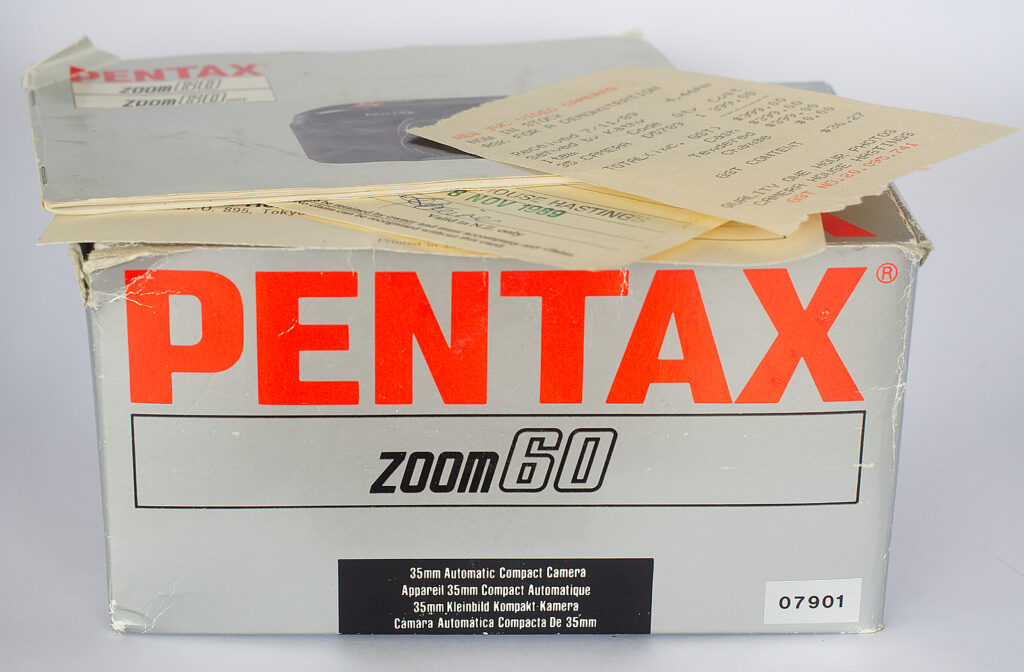
It came to me inexpensively, costing only a little more than the replacement battery it needed. It was originally bought new from a dealer in Hamilton, New Zealand in 1989 for NZ$399 so not a cheap camera and mid-range in specification terms, a capable and go anywhere type from a good manufacturer, and almost pocketable into the bargain. It was in its original box, with all the paperwork, user manual, guarantee and receipt from when it was bought and apparently in full working order with a part used film already loaded. The lithium battery was totally exhausted but fortunately hadn’t leaked and was easy to find a replacement.
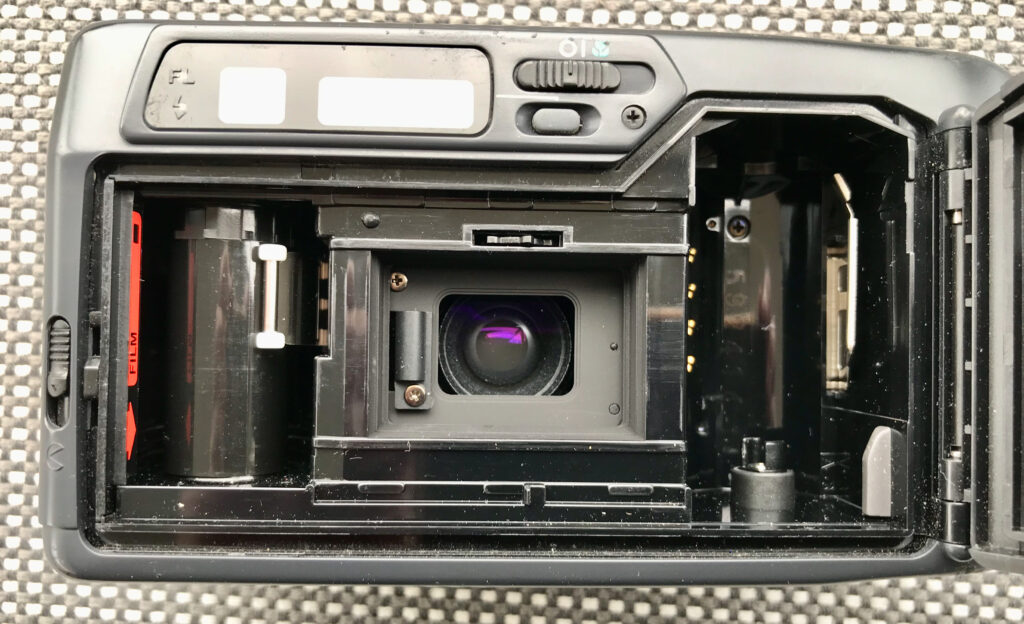
Loading film into the Pentax Zoom 60 is simply a matter of placing the cassette in the camera and drawing the film across the gate, right to left in this case, to a marked point making sure it is flat and the sprocket holes are engaged is all that is required. Close the back and it winds automatically to frame #1. Not drop in simplicity but fairly easy nonetheless. Film is DX coded and reads from 50 to 1600 ISO. Lower speeds or non-DX film defaults to 100 ISO.
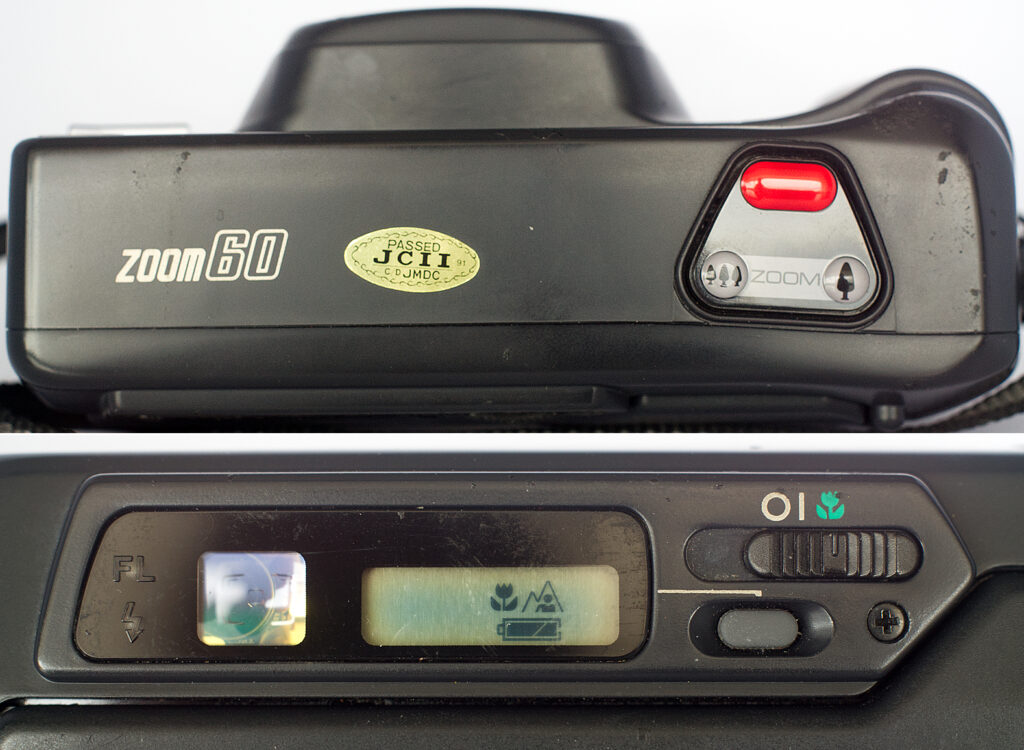
It features automatic wind which is activated after making an exposure, rewind starts automatically as soon as the last frame is taken. There is active autofocus, using infrared, auto exposure, and a built in flash, which cannot be switched off and will fire automatically when the light level requires it. Red and green LEDs alongside the finder indicate flash readiness and focus confirmation. The autofocus is not bad, speed wise, but is limited to a central point, typical at the time. This can result in missing focus with some shots, either from misplacement or not giving the camera time to find focus. Half pressure on the release locks focus to allow re-composing once the green light stops flashing.
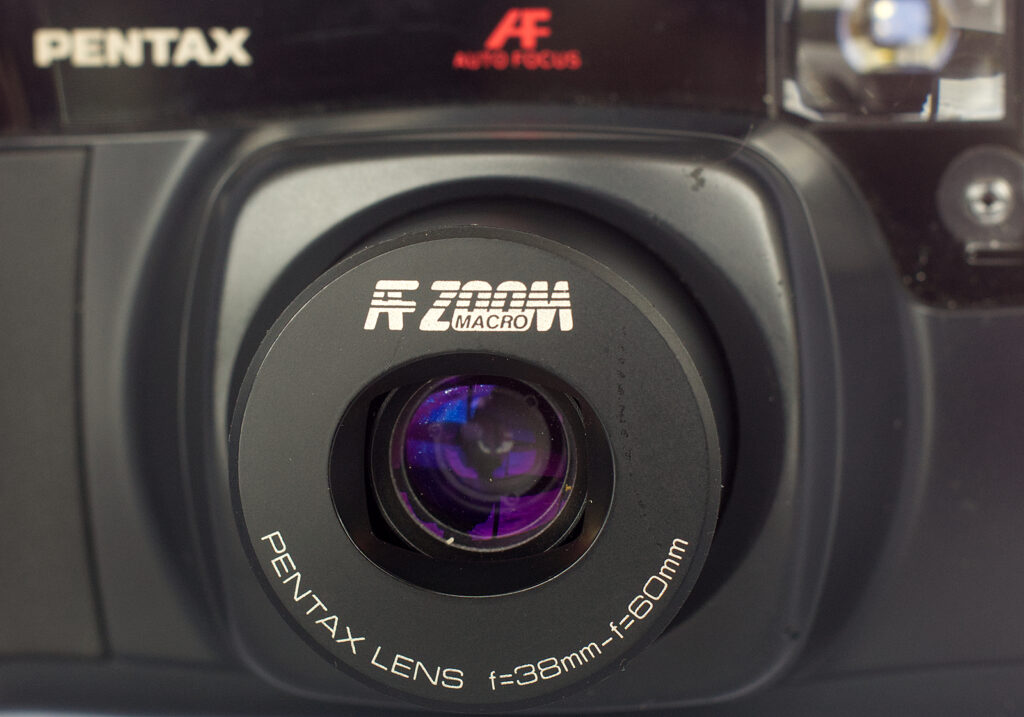
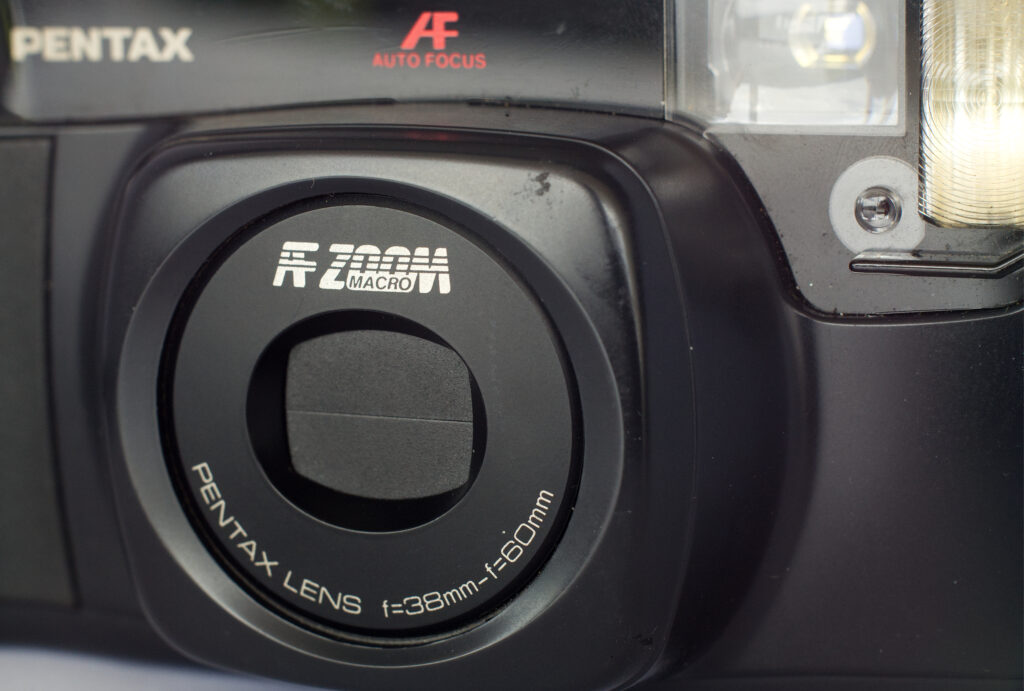
The Pentax Zoom 60 has a short zoom lens of 38-60mm, controlled by a rocker close to the shutter release.
All this is enclosed in a moulded body that fits the hands nicely and with controls well placed to maintain a steady grip. Blinds in front of the lens close and protect it when the camera is switched off.
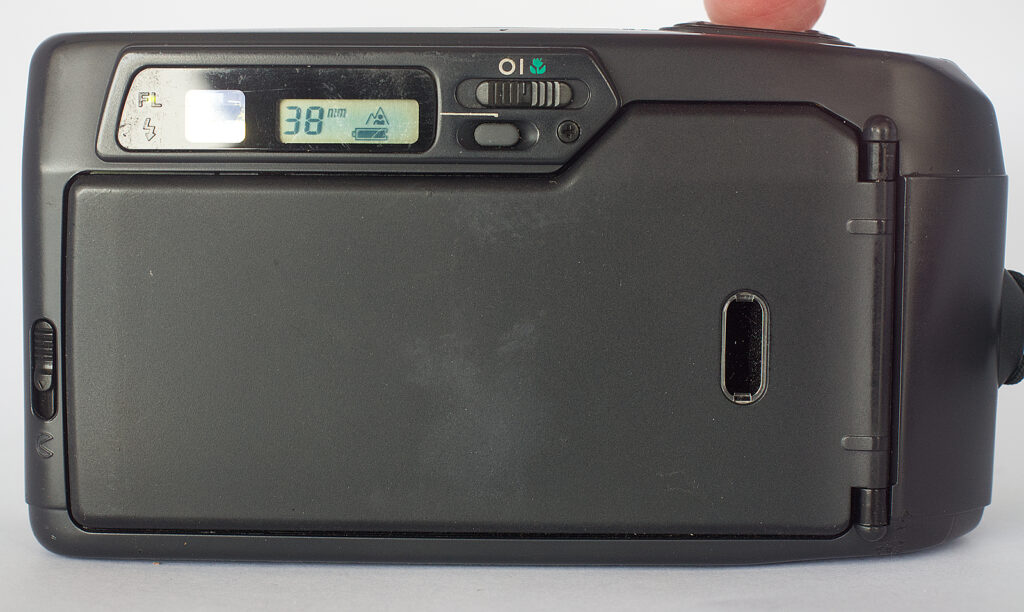
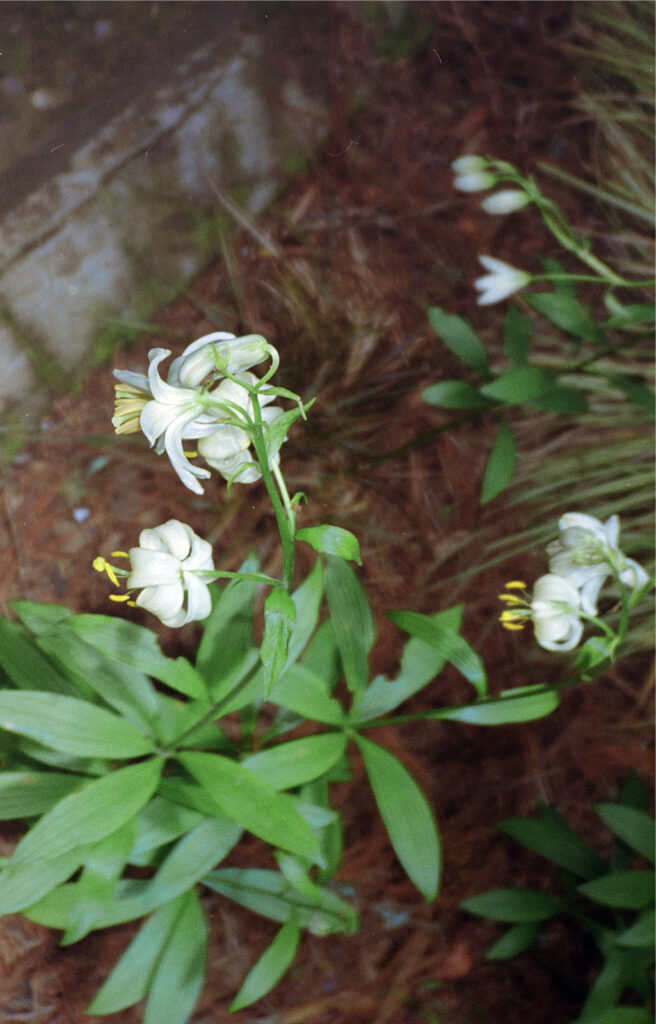
Despite the comprehensive simplification, the Pentax Zoom 60 does allow the photographer a couple of choices. These are a “macro” setting which is actually a close-up setting in reality including compensating the finder for parallax. Strange things happen to the finder when macro is selected, the manual doesn’t describe it very well but it seems to work. Also there is the option to set the flash to daylight fill-in when the flash will fire in compensating mode with every exposure irrespective of light level, back-lit outdoor portraits being the obvious application.
First film
There was a Fuji 200 ISO colour negative film in the camera when it arrived but, since the counter was showing #1 either it had not been used or the back had been opened at some point zeroing the counter. As I only managed nine frames it must have been the latter, so expecting more than half the film to be fogged I was pleasantly surprised to find only three or four frames were affected. A family’s activities was recorded on the earlier frames, just the sort of use it was made for. I shall try to locate the the original subjects and, of course, if by some fluke they are recognised here, then let me know.
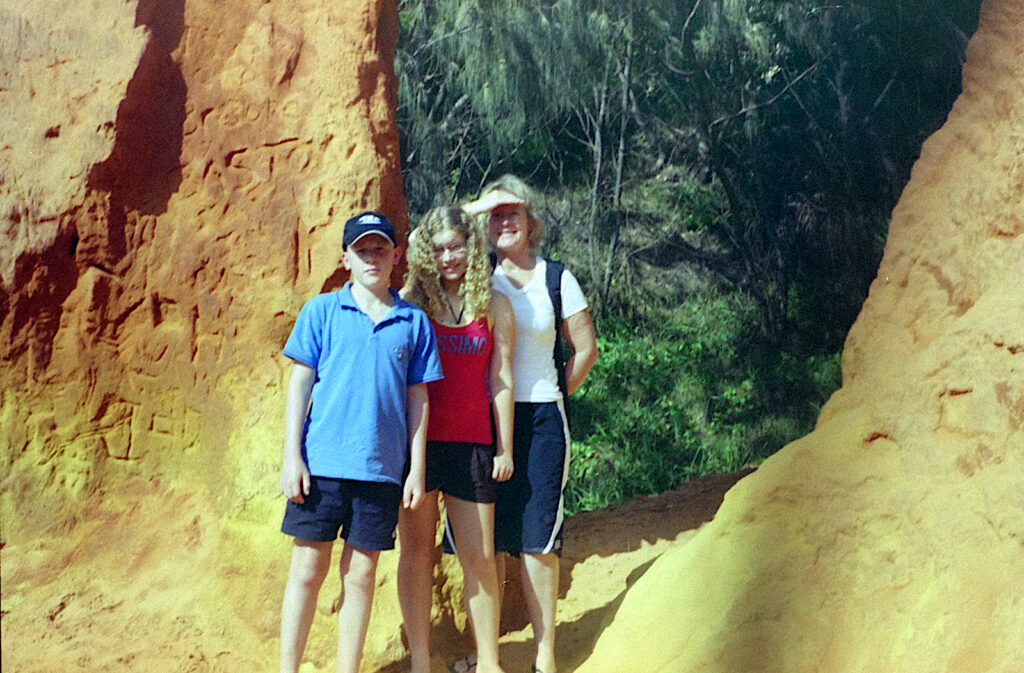
The lens doesn’t appear to be bitingly sharp but negatives respond to post-processing very well. I didn’t discover this until I had the second film to compare as I will come to.
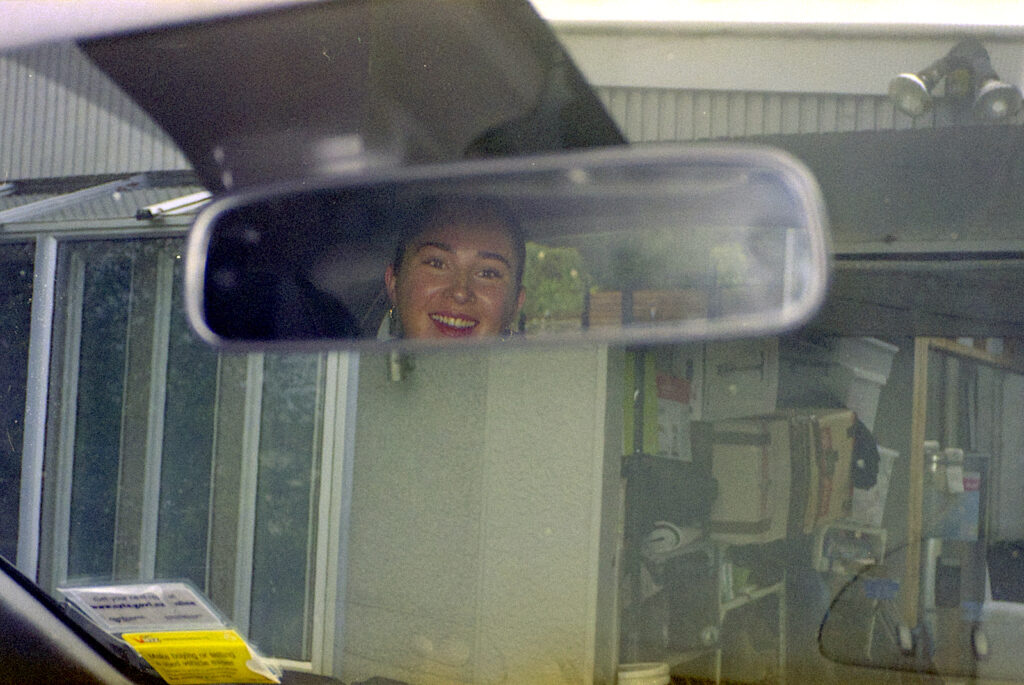
My back seat driving grand-daughter was shot using the fill flash setting and the camera coped very well balancing the different light sources out nicely.
Second film
I ran some fresh Fuji 200 colour negative through later to get a better idea of the Pentax Zoom 60 lens performance and as a fairer comparison.

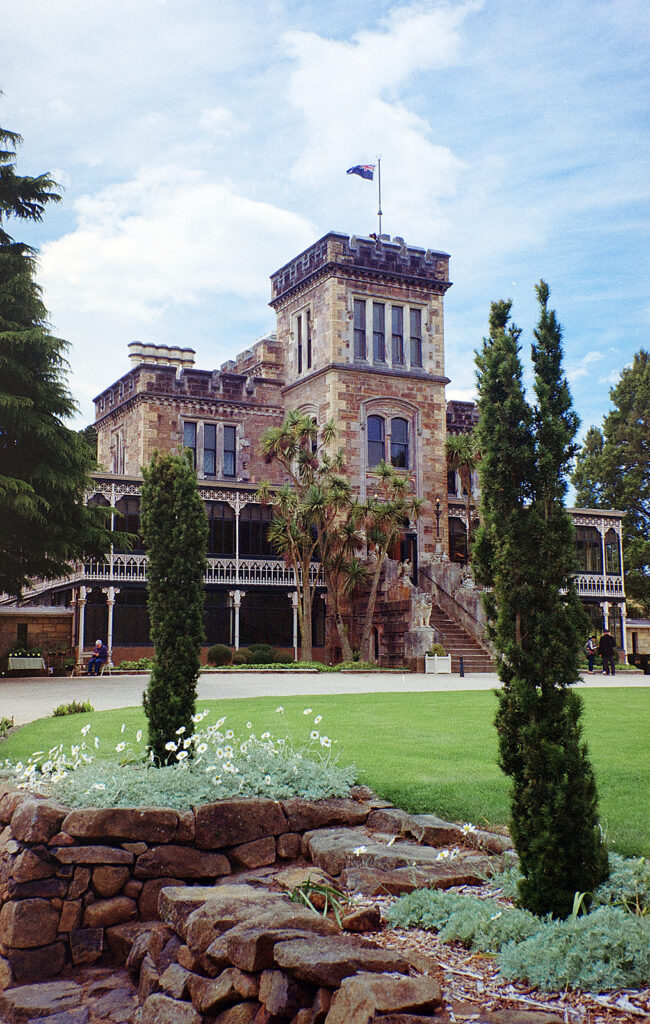
I must say I didn’t really take to the Pentax Zoom 60 initially, mainly because I constantly felt un-connected with it. I never knew what exposure was being set and whether the flash would fire or not. In its day I suppose this wouldn’t have mattered too much to its targeted owner but it left me feeling a little out of the action. The second film, however, turned this into something of a love-hate relationship. Some of the later results really surprised me. The meter seems to expose on the low side, negatives looking a little thin, but it coped with some very tricky situations. It also responded well to post-processing and sharpened up impressively without edge effects appearing.
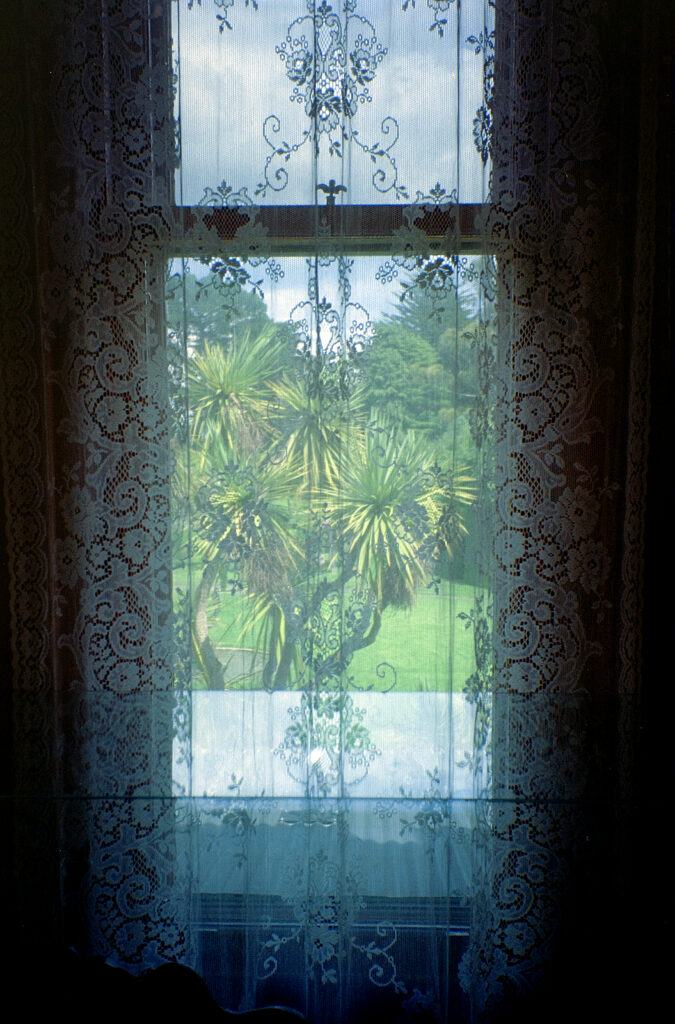
“love it” shots.
Focus is variable but mostly ok with care and I couldn’t complain about the sharpness and geometry of the lens in the end. Focus can be a bit of a lottery however and could have disappointed on a few shots.
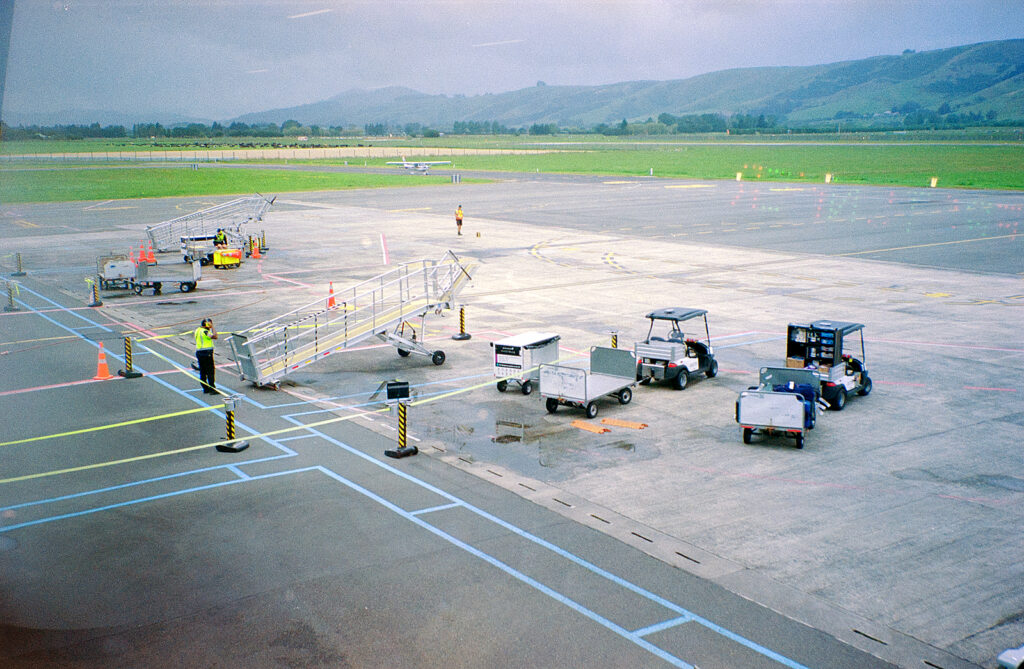
And finally
I have had several examples through my hands of this drive for automation from the period, starting with my Vitomatic IIa from 1950s, through a couple of Agfa offerings, a Ricoh, a Fujica and now this Pentax. They go from being traditional designs in metal and glass with lever wind transport, using shutter speed priority built-in metering with mechanical shutters and rangefinder focus through to plastic bodies, advanced lenses, auto-exposure electronic and programmed shutters, autofocus and autowind cameras typified in this Pentax. The way they blended with digital is interesting, with few cameras being really innovative.
It is interesting to see how materials and technological developments have influenced camera design, as in most utilitarian things of course. In many ways we are fortunate to have access to modern day equipment. But, let’s face it, having everything done for you is so much less satisfying than controlling all aspects of an image for an inveterate photographer. No doubt why so many of us still prefer using film in a manual camera when generating income is not the driving force.
Share this post:

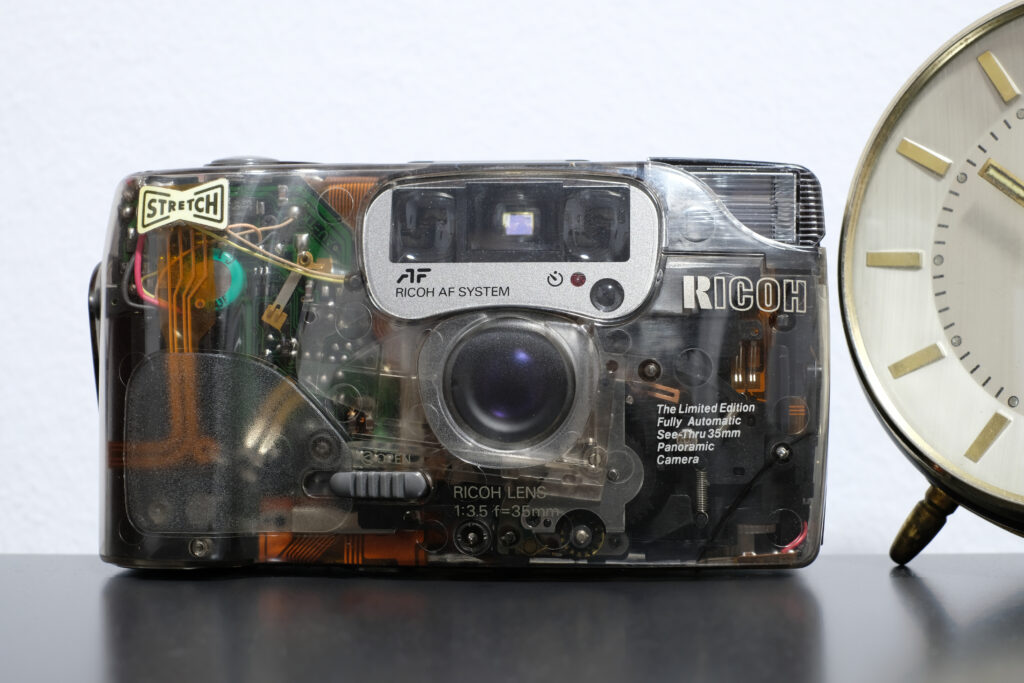
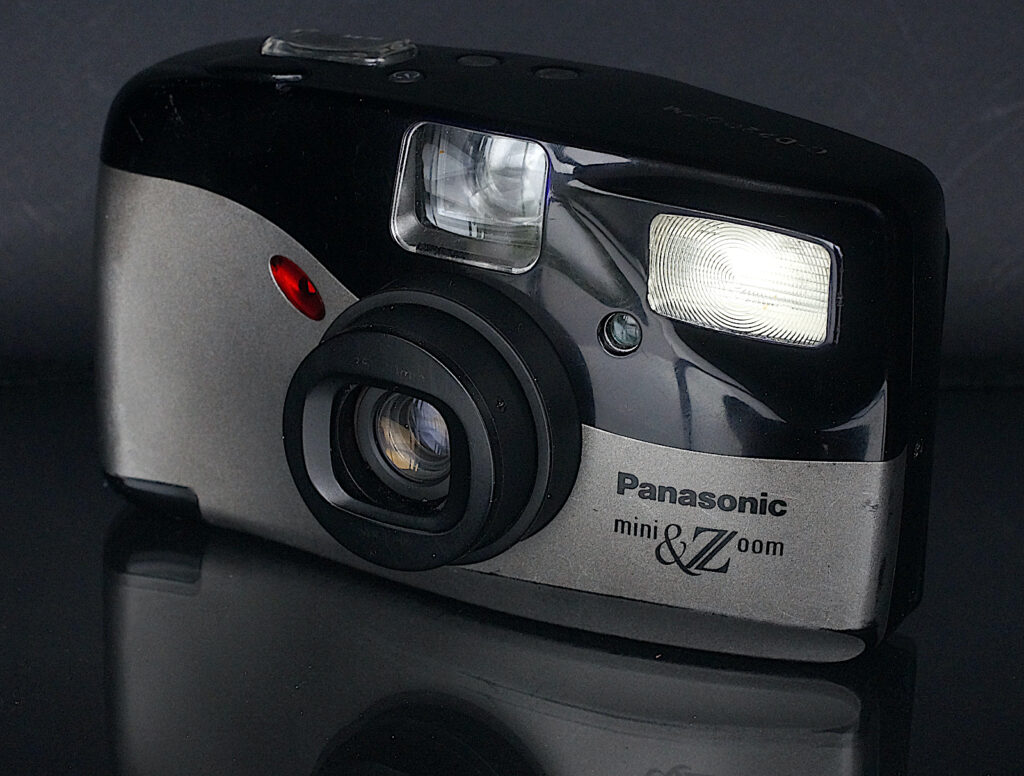
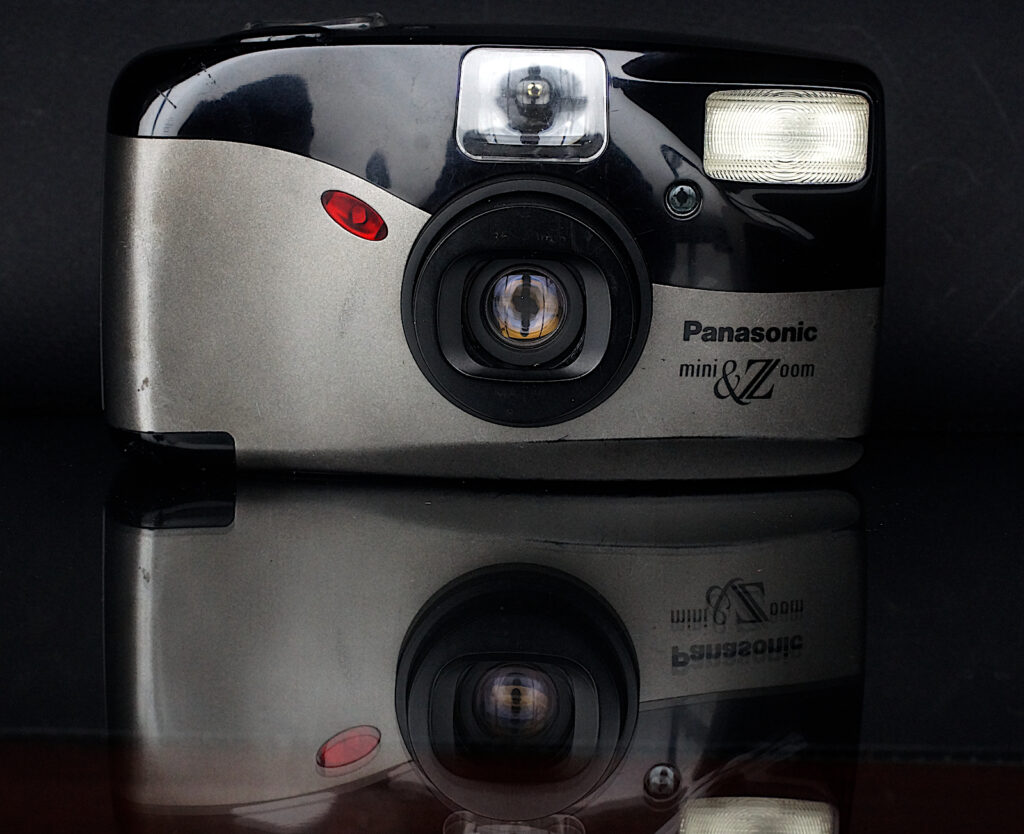
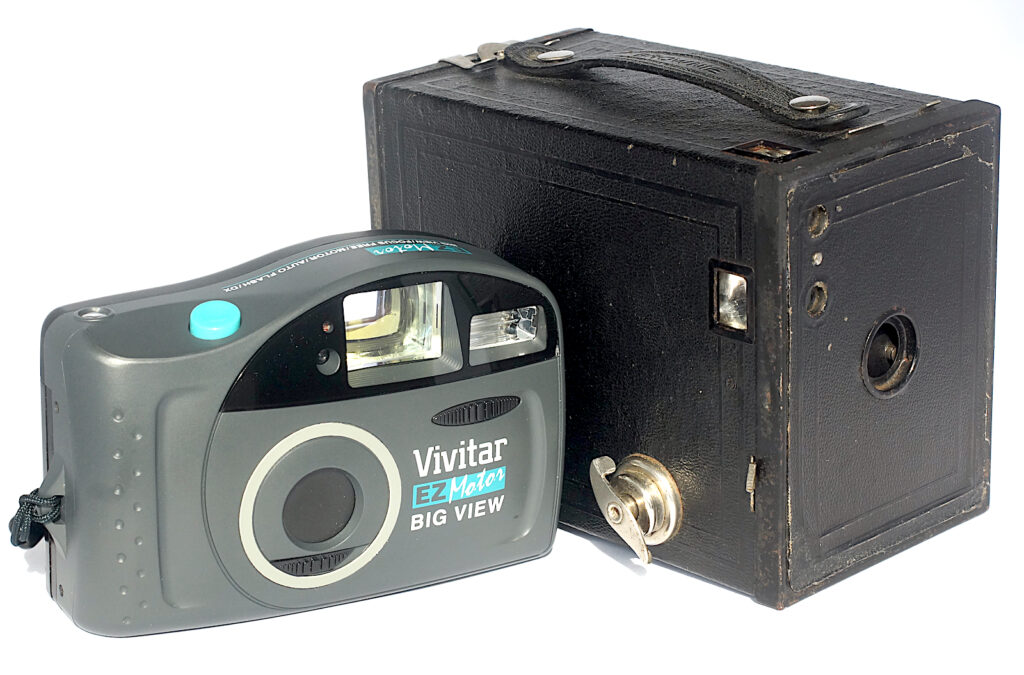




Comments
Paul Quellin on Pentax Zoom 60
Comment posted: 16/01/2025
Comment posted: 16/01/2025
Keith Drysdale on Pentax Zoom 60
Comment posted: 16/01/2025
Comment posted: 16/01/2025
Ibraar Hussain on Pentax Zoom 60
Comment posted: 18/01/2025
I have a Panasonic point and shoot bought new in what? 1990 or thereabouts. It has a coated 3.5 tessar type lens and I have been meaning to go out and use it again after 25 years (being the last time)
Thanks again
Comment posted: 18/01/2025